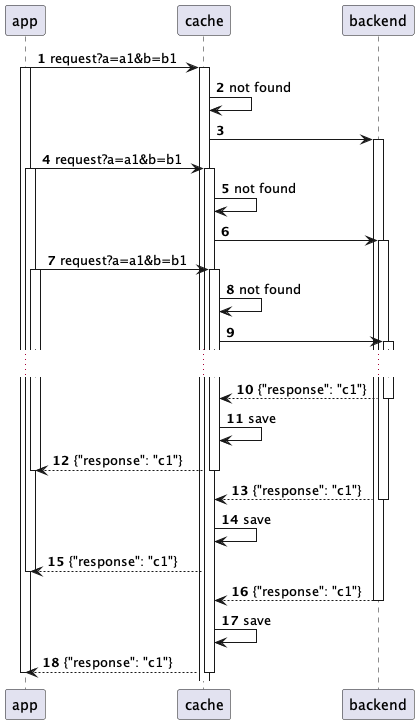Grundy’s paradox. How modern schoolchildren repeat the mistake of Leibniz and Euler
The father had two sons. And he left them an inheritance – a precious stone. And in order not to offend anyone, he set a condition for his sons: that stone could not be cut or sold. You can only take turns wielding it. And so it happened – every year the stone passed from one brother to another. Then the stone was owned in turn by their descendants, then by the descendants of their descendants… And this went on forever.
This parable was composed by the Italian mathematician, monk and philosopher Guido Grandi. With its help, he tried to explain the solution to the problem that he himself formulated in 1703. Grundy’s problem has a very interesting history. In the 18th century, it was considered a paradox and different solutions were proposed. Leonard Euler and Gottfried Leibniz did not stand aside either. Moreover, each offered a completely logical proof of their decision at that time.
Today, there is a single, clearly substantiated answer to the question formulated by Guido Grandi. However, the task still remains interesting – for a different reason. The fact is that people who are not familiar with the properties of series intuitively repeat the reasoning of Grandi’s contemporaries.
But first things first.

Grandi, Leibniz and Euler
So, Grundy’s problem is formulated very simply – what result will we get if we add 1 and -1 ad infinitum?
S = 1 − 1 + 1 − 1 + 1 − …
For those who are well acquainted with modern mathematics, and more precisely with mathematical analysis, the answer will be obvious. However, in the 18th century, scientists did not yet know about the convergence of series. Therefore, opinions differed: as many as three solutions were proposed: 0, 1 and ½.
Moreover, in favor of each of the options, separate, quite convincing for that time, evidence was carried out. For example, Gottfried Leibniz reasoned as follows: if we sequentially add the terms of the Grandi series, then the sum will alternately be equal to 1 and 0. It turns out that the sums 0 and 1 are equally probable. This means you just need to find their arithmetic mean – the most likely sum of the series will be ½.
Leonhard Euler came to the same answer, but in a different way. He perceived the Grundy series as a geometric progression with denominator −1. The sum of this progression will be equal to:
S = 1 : (1 − (−1)) = ½
Some reasoned quite simply: S − 1 = −S, which means S = ½.
By the way, there is another alternating series:
1 − 2 + 3 − 4 + …
Euler believed that the sum of such a series is equal to ¼. True, he himself considered such a decision “paradoxical.” In general, Euler explored a generalized version:
1 − 2n + 3n − 4n + …
He carried out this research while working on the Basel problem, another problem of finding the sum of a series.
Garden of Converging Paths
But let’s return to our row of ones. Grundy himself immediately received two versions of his sum: 0 and 1. He simply divided his series into pairs of terms in two ways:
Grundy was not at all embarrassed by this contradiction. He was not only a mathematician, but also a philosopher. Moreover – a Catholic monk. Therefore, he drew a purely theological conclusion from his calculations: the world is one, zero is nothing. The result is yet another proof that the world was created out of nothing.
However, this explanation did not satisfy all of Grandi’s contemporaries. For example, his fellow countryman Alessandro Marchetti became one of the first critics of this decision. He stated that an infinite number of zeros cannot produce a finite non-zero sum and pointed out to Grundy the dangers of theological interpretations of such problems. However, Grundy continued to insist on his interpretation. This resulted in a public spat between the two mathematicians in a series of open letters to each other.
Later Grundy changed his mind and also came to the answer ½. To explain this decision, he composed the same parable about a father, sons and a precious stone.
Grundy’s problem haunted mathematicians for a long time. It was explored by Jacob Bernoulli, Pierre Varignon, and Louis Antoine de Bougainville. New solutions were also invented. For example, in the 19th century, British mathematician Robert Woodhouse generally suggested that the sum of the Grundy series was equal to the strange number 1 / (1 + 1). This fraction had to be somehow different from ½.
Now we know that the concept of the sum of a series makes sense for convergent series – those in which the sum of terms, as their number increases, differs less and less from some fixed number. The Grundy series is not like that. Therefore, it is pointless to look for an amount for him.
The final idea of the convergence of series appeared only in the 19th century. So in the 18th century, mathematicians had the opportunity to properly argue what to do with the paradox of the Grandi series and what its sum ultimately equals.
“You can prove all sorts of nonsense”
But you know what’s interesting? We live in the 21st century, but not all of our contemporaries can give the correct answer to the question posed by the mathematician Guido Grandi three centuries ago. From a mathematician’s point of view, everything is obvious. From the point of view of a person who is not familiar with calculus (or has forgotten it thoroughly), the answer may vary.
For example, in 1987, 17-year-old students at the Warsaw Lyceum did not express much doubt that the Grandi series had any amount. They were not confused by the ‘½’ option. One of the students then said that: “with the help of these mathematical transformations you can prove all sorts of nonsense.” You can imagine how he shrugs his shoulders in bewilderment: they say, in this mathematics of yours, this is not possible.
In 2000, a similar experiment was carried out at the Italian Scientific Lyceum in Treviso. The Grundy series was shown to students aged 16-18. 34% found it difficult to answer at all. The correct answer (“impossible to calculate”) was given by only 6% of respondents. But the answer options from the 18th century were collectively a huge success:
“0” – 29%
“0 or 1” – 20%
“½” – 5%
“14%
Another 2% gave a slightly unexpected answer: “infinity.” Interestingly, the students’ reasoning largely coincided with the logic of 18th century mathematicians.
Try conducting a similar survey about the sum of an alternating series among your friends who are far from mathematics. But don’t forget what answers the venerable Leibniz and Euler offered! Perhaps someone in the next century will shake their head just as condescendingly after reading about our naive attempts to prove, for example, the Riemann hypothesis or solve the Goldbach problem.
What else to read:





